Contents
What is IPC?
The Institute of Printed Circuits (IPC) is a reputable international organization guiding the industry of electronic interconnections.
It does so through changes and standards that businesses in this industry must follow.
The IPC is a dedicated association, having seen the membership rise to more than 4,000 member firms.
The Institute of Printed Circuits represents the industry’s fundamental elements/dimensions, such as design, manufacturing PCBs, electronics assembly, and the final test.
The Institute of Printed Circuits is a member-driven entity that provides industry standards, market research, training, and public policy advocacy.
Furthermore, the Institute of Printed Circuits supports several programs that meet the needs of the global electronics industry, which is worth close to 2 trillion U.S. dollars.
Founded in 1957 and based in Illinois, the IPC has several PCB standards that PCB manufacturers must comply with at all times.
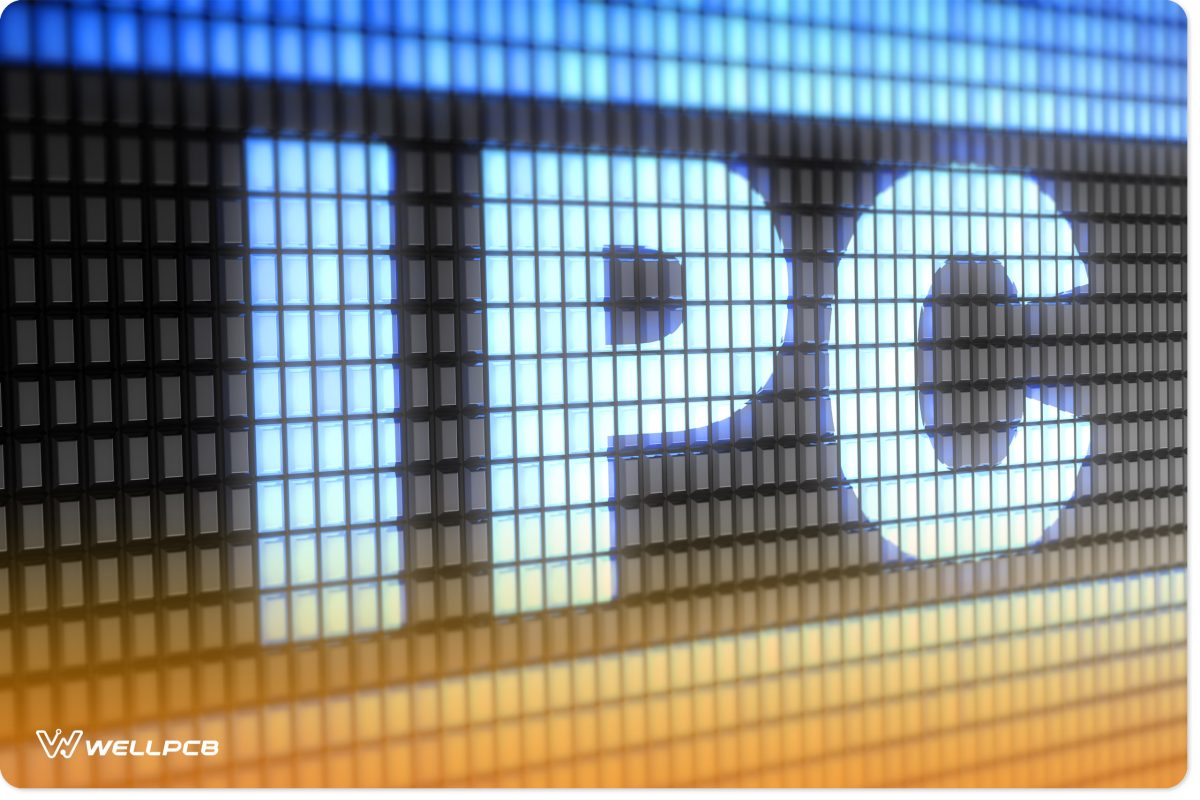
(High-tech pictures of ipc)
Why do we need to conduct IPC verification?
Have you ever attempted designing a PCB and then sent it to your manufacturer, only to find that they couldn’t manufacture it because you ignored IPC standards?
You are not alone, as this is a problem that many PCB designers face on almost a daily basis.
If you want to ensure your board’s production without any delays or difficulties, you must comply with IPC standards.
But why do IPC standards matter?
Is there a need to comply with IPC standards? There are several fundamental reasons why IPC standards matter.
First, IPC standards help designers and manufacturers save a lot of time before manufacturing their products.
By conducting IPC verification, designers and PCB makers save a lot of time needed to rework in a recall event.
Additionally, manufacturing reliable, safe, and high-performing PCBs demands attention to detail and some commitment to quality in the entire production process.
Adhering to IPC standards makes this easy for printed circuit boards. Compliance with IPC standards is necessary for companies to manufacture reliable, high-quality products that meet or even surpass customer expectations.
By adhering to IPC standards, companies stand to benefit from improved product quality and reliability.
Such will, in turn, make a firm competitive and profitable. Furthermore, it brings about enhanced communication.
By adhering to these standards, companies improve communication channels both internally and externally.
IPC standards ensure that everybody uses the same terminology while agreeing on set expectations.
Also, by adhering to IPC standards, correct PCB service provider. Thankfully, there are various PCB manufacturing firms are assured of reduced PCB manufacturing costs. With improved quality and miscommunications, there’s little to no likelihood of reworks and delays. IPC standards also bring about improved company reputation in addition to new opportunities. Complying with standards recognized internationally, such as the ones from IPC, gives the firm instant credibility.
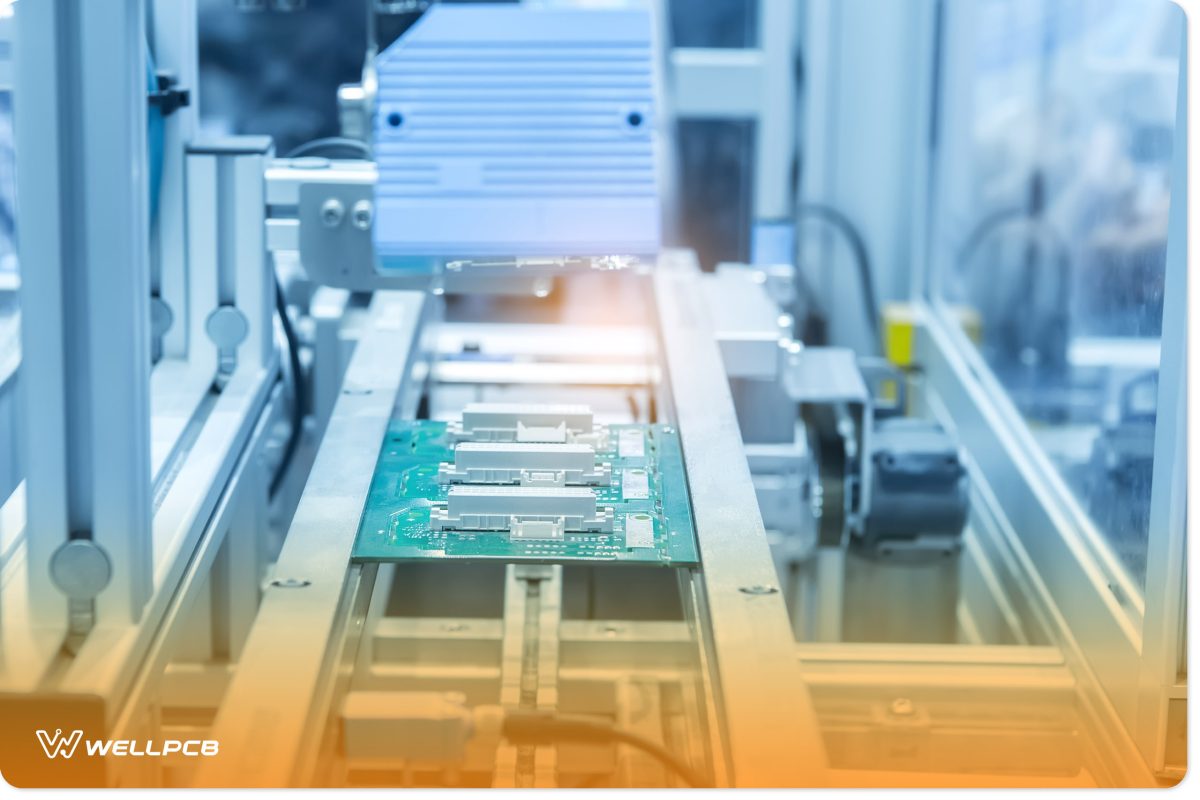
(Microchip production plant)
IPC assembly standards for PCB manufacturing
There are plenty of IPC standards that PCB manufacturers have to comply with at all times. However, as mentioned earlier, the most widely used and accepted one is IPC-A-6012.
If you can remember, IPC-A-6012 deals with the Acceptability of Electronic Assemblies.
While all the IPC standards are essential, there are some that you can’t ignore, regardless of the situation at hand.
But this is not to imply that the rest are useless or don’t deserve significant attention. Some of the most basic ones include:
IPC-6012 – Qualification and Performance Specification for Rigid Printed Boards
The IPC 6012 is a standard that went ahead to establish and define the performance and qualification of requirements for the HDI, and passive/active PCBs.
These standards establish types of wooden boards while describing the conditions that Class 1, 2, 3, and 3A wooden boards should meet.
IPC-A-600—Acceptability of printed boards, check documents
The IPC-A-600 is heavily used and one of the most accepted forms across the IPC PCB industry.
The IPC-A-600 revolves around the handling of electronic assemblies in addition to acceptable methods for hardware installation. That’s not all about the IPC-A-600 standards.
It also touches on what constitutes satisfactory results from soldering and many other aspects of through-hole and surface-mount circuit boards.
IPC-A-630-Electronic enclosure manufacturing
The IPC-A-630 is an Acceptability Standard for Manufacture, Inspection, and Testing of Electronic Enclosures.
It’s a simple standard that provides the requirements necessary for manufacturing, inspecting, and testing electronic enclosures.
The IPC-A-630 directs end-users, and more so manufacturers, to manufacture reliable and functioning items.
IPC 7711 / 7721C-Rework of Electronic Assembly
Your contract manufacturer will have to use or rely on information from this document to repair or rework your PCB assembly to IPC standards.
As the name suggests, IPC 7711/7721C is all about the rework of electronic assembly.
If your design doesn’t meet the required standards, your contract manufacturer may have to repair or rework it.
As mentioned way earlier, there are plenty of other IPC standards/specifications that apply to PCB Rapid Prototyping. 3D PCB Printing not only makes the PCB but it also does the Printed Circuit Board Assembly (PCBA. However, the four mentioned above are some of the most basic ones. The above are the most primary ones that reputable and dependable contract manufacturers have to use. The four mentioned above can ensure the success and proper functionality of your boards.
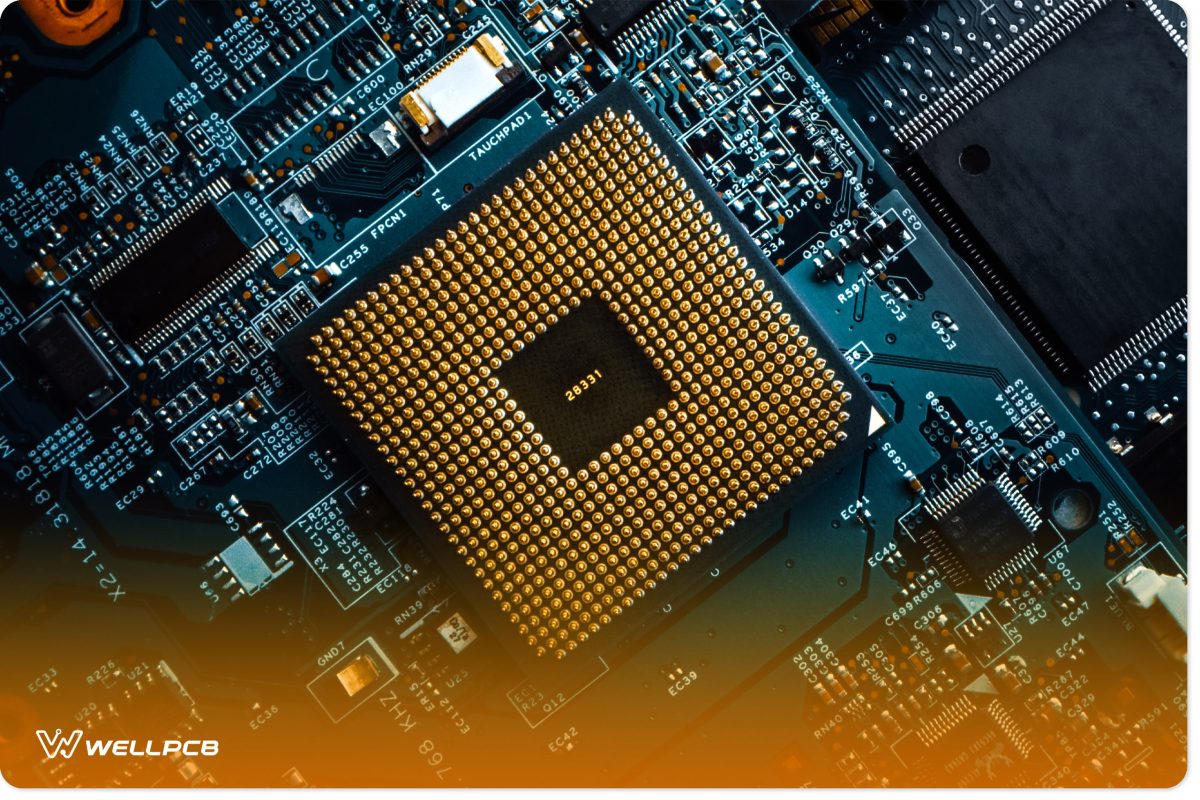
(Computer motherboard with CPU processor socket)
The difference between IPC-6012 and IPC-A-600
A few notable differences between IPC-6012 and IPC-A-600 standards are worth noting, as highlighted in the section below:
IPC-6012 is a performance specification
The IPC-6012 is more of a performance specification. Being a performance specification, the IPC-6012 defines the default requirements in addition to the specifications needed for each Class of PCB.
Classification: Class 1, Class 2, and Class 3
Class 1 are general electronic boards that consist of limited life and “simple” functions.
These simple functions are those that you’ll find in devices such as remote controls. Class 2 is for dedicated electronic products.
Here, you can expect the boards to have some extended life, meaning that you can use them in computers, air conditioners, or television screens.
Lastly, there are Class 3 products. These are slightly tight intolerances compared to Class 1 and 2 boards.
They are high in terms of reliability and find a lot of applicability across medicine and military industries.
Some specifications of IPC-6012
Below are some of the unique specifications of IPC-6012 worth noting:
Dimensional
Unless specified on the specification or drawing, printed circuit boards must meet the required minimum dimensions needed in the IPC-6012 standards.
Solderability
Solderability refers to how fast a metal can get wet by molten solder.
According to IPC-6012 standards, all batches of printed circuit boards must undergo solderability testing.
According to IPC-6012 standards, poor solderability is a significant defect.
Visual
Visual inspection is a must for all printed circuit boards. The Visual inspection or final quality check is necessary before product release.
All panels are subject to visual inspection unless otherwise specified.
Conductor width and spacing
Conductor width and spacing refer to the minimum air gap between two adjacent copper features.
Usually, the requirements for conductor and width spacing should be less than 0.007 inches.
Anything more or less than 0.007 inches is substandard.
Conductor surfaces
Pinholes and nicks are acceptable in voltage planes for Class 2 and Class 3 printed circuit boards.
However, they shouldn’t exceed 1.0 mm in terms of their longest dimension.
Additionally, there shouldn’t be more than four conductor surfaces per side.
Cleanliness
According to IPC-6012 standards, cleanliness is a must. Here, all printed circuit boards must be cleaned before the application of solder-resist coating.
Unclean boards containing contaminants shouldn’t be allowed to find themselves in the market.
Cleanliness is a must before and after the application of solder-resistant coating.
Structural integrity
According to IPC-6012 standards, there are several structural integrity aspects that all PCBs must meet.
Based on IPC-6012 standards, all printed circuit boards must meet structural integrity requirements, especially for thermally stressed evaluation test coupons.
Process of Production Design
The IPC-6012 standards specify the processes that should go into PCBs’ production design. Here, the entire land and spacing specifications should be within the recommended tolerances.
Additionally, the drill holes have to meet the required size and quality requirements. The solder mask specifications also have to fall within the recommended tolerances.
Performance requirements are more precise.
When it comes to IPC-6012 standards, the performance requirements are somewhat more accurate.
When it comes to performance requirements, users need to consider what the supplier must deliver in principle.
It also indicates the type of material used and the tests the board underwent to prove its functionality.
Printed Board Dimensional Requirements Internal Inspection of:
Hole Size – Based on IPC-6012 standards, standard PCBs’ hole size should be 0.8 mm in diameter.
Most manufacturers typically recommend a hole of 0.040 inches, which is accurately 1.00 mm in diameter.
Pattern Accuracy and Pattern Feature Accuracy – Pattern accuracy adjusts user mobility’s regularity to real user mobility.
Increasing the level of pattern accuracy improves a user’s pattern of mobility.
When it comes to IPC-6012 standards, pattern accuracy and pattern feature accuracy are essential.
All the ways in a PCB must be in unison with each other at all times.
Annular Ring Breakout (internal and external) – The primary purpose of annular rings is to establish good connections between copper trace and the via atom.
Annular rings serve as anchors for the circuit. IPC-6012 has specifications concerning annular ring breakout.
Annular ring breakouts occur due to insufficient width of the ring during the design stage.
According to IPC-6012 standards, the minimum annular ring width needs to be 0.007 inches. Such will prevent both internal and external breakouts.
Used to evaluate the integrity of the PCB structure
IPC-6012 standards when it comes to assessing the integrity of the printed circuit board structure.
Some integrity issues under IPC-6012 that PCB makers need to be on the lookout for include the following:
Plating integrity and voids
Problems concerning deposition might compromise interconnections inside a printed circuit board’s hole-walls.
In the end, the printed circuit board might fail or fail to function as desired.
Laminate voids and cracks
Laminate voids and attempts are common problems during PCB manufacture. A laminate hole is the absence of epoxy resin in areas that should typically contain some epoxy resin.
On the other hand, cracks within PCBs may occur during the process of some elevated stress.
Such can happen either thermally or mechanically.
The IPC-6012 standards document has specifications on how to go about minimizing or avoiding laminate voids and cracks.
Delamination
Delamination is a failure mode characterized by a material fracturing into layers. The IPC-6012 document contains measures on how to go about avoiding delamination.
If you want to avoid splitting apart into layers, the right materials are necessary.
Hatchback
Hatchback is the process of getting rid of epoxy resin from the sidewalls of a drilled via hole.
The reason for doing so is to ensure that there’s excellent electrical connectivity between the layers of a printed circuit board.
IPC-6012 standards require that the epoxy resin used should be easily removable if need be. The epoxy resin material should be that which would be easy to get rid of if it needs removal.
Maintaining excellent electrical connectivity between the layers is essential for signal routing.
Smear removal
In the manufacture of printed circuit boards, smear removal is necessary.
The purpose of smear removal is to remove the smear on the hole wall, allowing the formation of electrical connections in the circuit’s inner layer.
Additionally, smear removal enables the construction of adequate hole wall adhesion. Based on IPC-6012 standards, smear removal is necessary before through-hole plating.
Hole breakouts, internal and external
Hole breakouts, both internal and external, are conditions where the land doesn’t surround holes.
The Hole breakouts are problems that a lot of manufacturers face when manufacturing PCBs.
Hole problems can occur both internally and externally on a printed circuit board.
Lifted pads
On a printed circuit board, lifted places may occur. Raised pads do occur as a result of a combination of physical and thermal issues.
If the cushions don’t sit correctly, they may cause the failure of parts or the entire PCB.
Lifted pads naturally happen when attempting to de-solder parts/components from the board.
It may also occur if you overwork the joint to an extent where adhesive bonds between the board and the copper are damaged.
Plating thickness
Plating thickness is essential in the production of PCBs. Consistency matters a lot when it comes to circuit boards.
Plating thickness is a necessary standard for circuit boards. While there’s an official plating thickness standard, there are sizes that are highly common and preferred by manufacturers.
The plating thickness should be 1.57 mm or approximately 0.062 inches based on IPC printed circuit board standards.
Even though today’s PCBs’ design and manufacture tend to be smaller, the plating thickness remains the most common thickness for almost all formats.
Today, it’s more accurate to say that there’s a range of standard or typical PCB plating thicknesses.
Some of the most common ones include 0.0031 inches (0.78 mm), 0.093 inches (2.36 mm), and 0.062 inches (1.57 mm).
Foil thickness, internal and external
On printed circuit boards, copper foils act as the base copper thickness applied on the inner and outer layers.
The IPC standards allow up to a maximum of 10% reduction in foil thickness.
According to IPC-6012 standards, foil thickness (both internal and external) matters a lot. A majority of printed circuit board manufacturers typically use sheets of ½ oz.
Metal cores
A metal core printed circuit board is a type of PCB consisting of metal materials as its base.
Some of the essential areas include the metallic core and the metal heatsink.
The purpose of using metal is to ensure the diversion of heat away from some of the board’s most critical components.
IPC-6012 standards indicate that evenly distribution of layers must be on every side of the metalcore in multilayer PCBs.
As an example, in a 12-layer board, the metal core must be at the center, consisting of 6 layers at the bottom and six layers of the metal core at the top.
Features
As mentioned earlier, IPC-6012 standards are more of a performance specification standard.
IPC-6012 standards define default requirements in addition to the specification requirements necessary for each class of printed circuit boards.
Some of the essential features here include matters to do with cleanliness, solderability, and conductor surfaces, to mention but a few.
IPC-A-600 inspection documents
As mentioned earlier, IPC-6012 differs from IPC-600 in several ways. Just like IPC-6012 standards, there are IPC-A-600 standards that PCB manufacturers must comply with at all times.
IPC-A-600 has standards for PCB artistry. The IPC-A-600 document consists of comprehensive acceptance criteria for acceptable, target, and nonconforming conditions on bare PCBs.
As mentioned earlier, the IPC-A-600 is the IPC’s most widely used standard that IPC has managed to publish.
Such makes the IPC-A-600 a natural choice for certification. As mentioned earlier, IPC-6012 standards differ from IPC-A-600 standards.
The following are some IPC-A-600 standards that make it different from IPC-6012 standards:
Have a lot of pictures and drawings
The IPC-6012 doesn’t contain plenty of photos and graphics. Photographs and illustrations are necessary when it comes to the design and manufacture of PCBs.
The difference is that IPC-6012 doesn’t contain plenty of pictures and photos, unlike IPC-A-600.
Since IPC-A-600 contains many photographs and drawings, a lot of designers prefer it more than IPC-6012 standards.
If you want to design and manufacture IPC PCBs without a lot of trouble, then you may have to stick with boards that comply with IPC-A-600 standards.
With such, you’ll get pictures of how to go about doing everything.
Designed for inspection purposes
IPC-A-600 standards give a printed circuit board assembler the information to do a quality job based on incoming inspection.
IPC-A-600 emphasizes design for inspection (DFI). Design for inspection is a principle of engineering proposing that inspection measurements and methods used in conformity certification require early consideration in product design.
Knowing acceptable conditions means that assemblers won’t have to dig deeper into their pockets if product recalls happen. Getting to know nonconforming conditions saves printed circuit board assemblers from costly component mounting operations.
When it comes to PCBs’ design and manufacture, IPC-A-600 emphasizes a lot on Design for Inspection (DFI).
Among other things, Design for Inspection in the design and manufacture of PCBs brings about lower costs and high profit margins.
The inability to consider matters to do with Design for Inspection (DFI) can come with high buried costs.
Features
Just like IPC-6012, IPC-A-600 has got some features too. Some of the components or requirements here include plated through-hole requirements, etched dielectric material standards, resin recession, and matters to do with voids.
How to choose IPC-A-600 or IPC-6012 standard
Most printed circuit board designers seem confused when it comes to choosing between IPC-A-600 and IPC-6012 standards.
But the choice between the two depends on the size and the requirements of your project.
Manufacturers must comply with several comprehensive inspection specifications found in IPC standards.
Designers also need to be careful regarding the design rules required across IPC standards.
IPC-A-600 and IPC-6012 are two of the primary guiding documents, also going by the name performance and inspection documents.
The IPC-6012 is the specification, with the IPC-A-600 being the visual representation of the IPC-6012 form.
Here are a few essential things to note when it comes to choosing between IPC-A-600 and IPC-6012 standards:
Both standards are essential to get a high-quality PCB product
Both IPC-A-600 and IPC-6012 are crucial when you want to get high-quality PCBs. Both of them have features and specifications that PCB producers must satisfy.
Even though IPC-A-600 may contain superior standards compared to IPC-6012 standards, both are essential for producing high-quality PCBs.
The choice between the two depends on the magnitude and requirements of your project.
Product choice
As the name suggests, product choice involves choosing or selecting the best product among the available options.
Depending on the standards used when making a PCB, you’ll undoubtedly have to choose between a PCB made in compliance with either IPC-6012 or IPC-A-600 standards.
For the best-printed circuit boards, you may have to go with those manufactured under IPC-A-600 standards.
The IPC-A-600 standards are slightly superior to IPC-6012 measures. As you may be well aware, the IPC-6012 is a specification that establishes and defines the performance and qualification requirements needed for the fabrication of rigid printed circuit boards.
IPC-6012 determines the desired rigid board requirements
IPC-6012 for selecting the printed circuit board’s desired size. The conditions here apply to almost all types of PCBs.
The types of PCBs here include multilayer PCBs, single-sided, active/passive PCBs, HDI, and metal core PCBs.
Being a performance specification, the IPC-6012 defines the default requirements in addition to the specifications required.
IPC-A-600 standards find heavy use for upcoming inspection specifications
IPC-A-600 standards are slightly superior to IPC-6012 measures. They are used specifically for upcoming specifications on a printed circuit board.
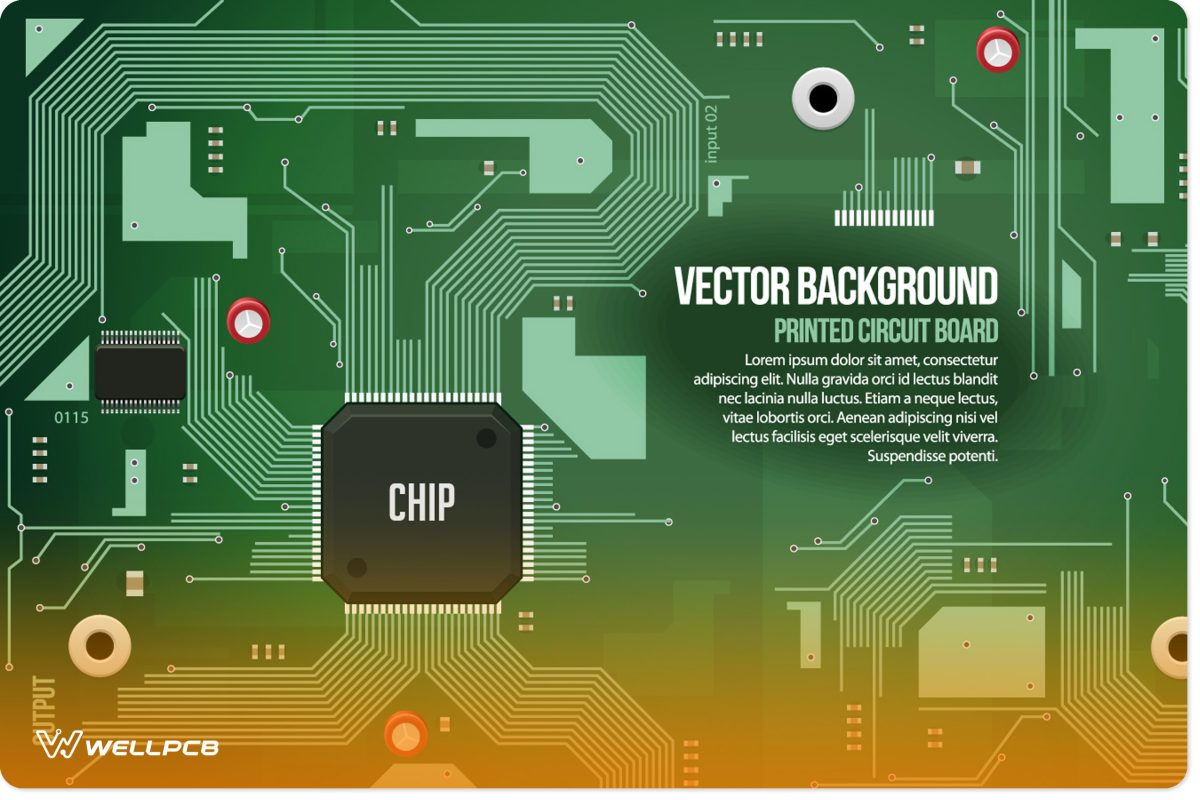
(Printed circuit boards and chips)
IPC 6012– Determine product acceptance criteria with suppliers
Acceptance criteria are the conditions that a product must satisfy or meet to be accepted by customers, users, or other stakeholders.
In other words, these are some pre-established requirements or standards that a particular product must meet.
IPC-6012 and IPC-A-600 determine product acceptance criteria with suppliers. They consist of measures and means that a product must meet to be deemed acceptable.
For instance, the IPC-A-600 and IPC-6012 contain several acceptance quality levels that determine the maximum number of defective units, beyond which a batch may face automatic rejection.
Acceptance limits determine how many samples need to be picked and put under inspection and the boundary between refusal and acceptability for defective products.
Additionally, IPC-A-600 and IPC-6012 have several guides that manufacturers use to provide a standard methodology for inspecting the printed circuit boards.
A product must meet some aspects: cleanliness, solderability, conductor width, and spacing, to mention but a few.
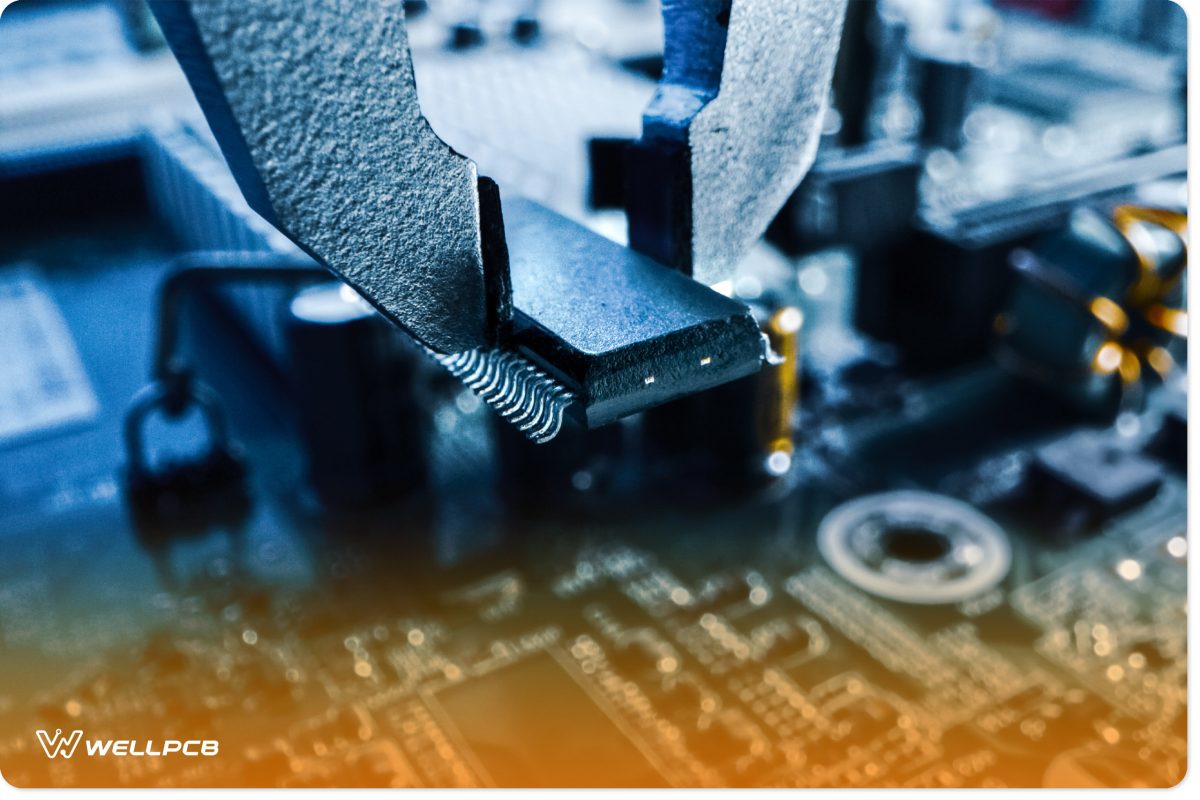
(Advanced PCB board that meets IPC regulations)
Summary
Almost all printed circuit board manufacturers claim to be IPC-6012 or IPC-A-600 compliant. Most claim to have the ability to manufacture boards that meet any of the classes.
But not all of them are who they say they are. But we at WellPCB are IPC-6012 and IPC-A-600 compliant.
We employ IPC-6012 to establish the requirements of our printed circuit boards.
We also use IPC-A-600 for upcoming inspection specifications. Contact us for more information and other capabilities that we have.
If you want to know more about our level of quality and certifications, then give us a call. We would be delighted to schedule an informative tour for you.





